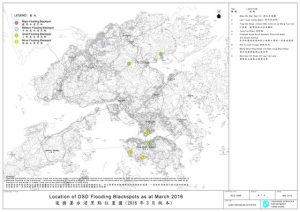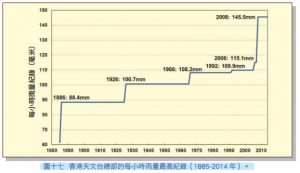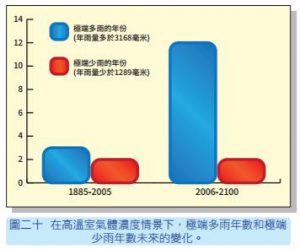|
Live with the flow
THESIS STATEMENT
My thesis is focusing on the flooding issues in a future scenario when climate change is getting worse and worse with intensified storm and typhoons, and starting to question that can ecological resilience be adopted in the flooding scenario? Also, I will explore the resiliency of a community and building system through how it actively respond to different flooding scenario, and how it even benefit from inherent, inevitable environmental dynamics, which are considered hazardous and problematic.
 Flooding in HK
WHAT
Ecological resilience is about the ability of a system to absorb the disturbances but also survive regardless of the state, whilst engineering resilience encompasses both resistance to and recovery from disturbances, although the measurement is focused exclusively on recovery- the faster the full functionality is restored, the greater the resilience.
Obviously, Hong Kong is now heavily relying on an engineering resilience approach to cope with the risk of flooding, with a developed drainage network, channelizing river, to stop the water coming in. But when climate change is getting worse with intense rainfall, the engineering approach may not be adequate to cope with the risk. Therefore, I want to take some flooding black spots in Hong Kong as my testing sites.
Before testing the idea, I will do some research studies on different flooding policy or projects that are already taking place in different countries, to know how they live with the flooding. After the research studies stage, the thesis will explore the resiliency of a community and building system through how it actively responds to different flooding scenarios. The architectural project could be designing a floating prototype for the low land areas, and expand it to a larger scale to form a floating community in different site context.
 Flooding black spots in HK
WHY
Flooding has always been a problematic issue in the lowlands of Hong Kong, such as Tai Po, Yuen Long and Pok Fu Lam. Although the Drainage Services Department has already invested over 20 billion HKD in improving flood infrastructure and engineering technological solutions. However, from the recent flash flooding incidents and damages caused like in Yuen Long and Tai Po, which are always the flooding black spot in HK, it can be seen that these approaches are inadequate to cope with the risk.
Furthermore, climate change is having a huge impact on towns and cities in a global scale and according to the HK observatory, flooding will become more common and severe in in the lowland areas and reclaimed land along the harbor with intensified typhoons, storm surges and sea-level rise.
As everyone knows, global warming cannot be stopped but only to be slowed down. Therefore, we eventually need to confront the truth that the day of living with flood is not far away from the future.
 Highest rainfall per hour from 1885-2014
 Predicted extreme highest and lowest rainfall from 2006-2100
HOW
1, Research on the topography and flooding history of all the lowlands in HK in order to decide my testing site
2, Research on the estimated flooding level of the lowland in the future years by estimating the future rainfall
3, Study on the urban fabric and network system of the site
4, Testing prototype designs in individual scale and cluster scale, in different phases of flooding in the site: Minor flooding, moderate flooding, severe flooding.
Book:
1. Theodore Spyropoulos, Adaptive ecologies: Correlated systems of living
2. Jeroen Aerts,Wouter Botzen,Malcolm Bowman,Piet Dircke,Philip Ward, Climate Adaptation and Flood Risk in Coastal Cities
3. Donald Watson and Michele Adams, Design for Flooding: Architecture, Landscape, and Urban, Design for Resilience to Flooding and Climate Change
Article:
Kuei-Hsien Liao, Theory on Urban Resilience to Floods—A Basis for Alternative Planning Practices
Charlie Gates, Extreme weather warning, architects need to rethink design to deal with climate change, advises government study (Building Design, 2004 July)
Website:
Hong Kong general context info:
http://www.climatechangebusinessforum.com/en-us/page/show/hong_kong_context_affected
http://www.climatechangebusinessforum.com/en-us/page/show/hong_kong_context_affected
Flood control in Netherlands:
Flood Control in the Netherlands Now Allows Sea Water In
HK climate change 2015 report: http://www.enb.gov.hk/sites/default/files/pdf/ClimateChangeChi.pdf
http://www.scmp.com/infographics/article/1461850/here-comes-rain-again-hong-kongs-rainfall-patterns-1997
https://www.chinadialogue.net/article/show/single/en/3919-A-lot-to-lose
|



